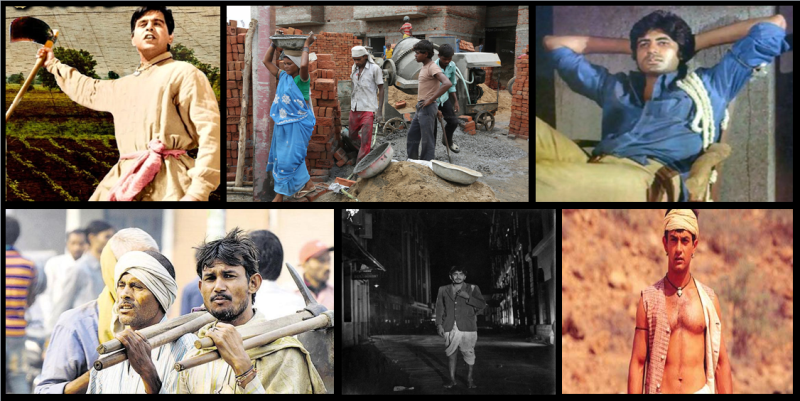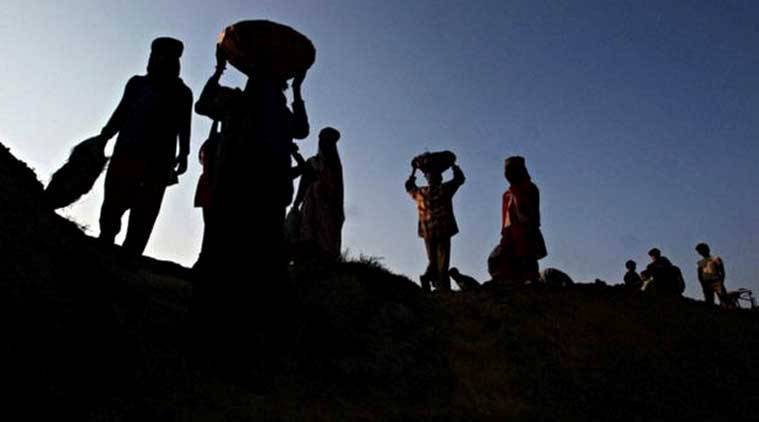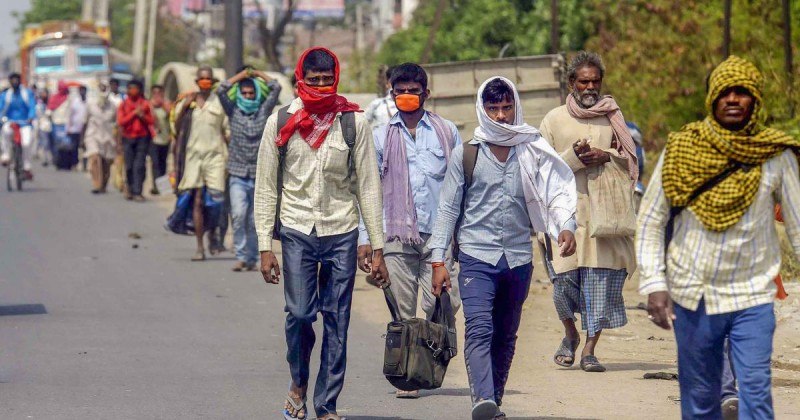For about 3 weeks between May and June, I spent every day volunteering at the grounds, delivering and distributing food and water along with an NGO, as well as helping the police document and get in touch with documented labourers to board the trains for the day.It was a massive process, involving multiple district level bureaucratic offices and thousands of labourers who had registered from Sarjapur police station in Bangalore alone. In many ways, it was disastrous, but we were somehow able to get everyone aboard the trains with some food in their bellies. What will follow in this paper is a critical view of the entire situation that India was placed in during the ongoing COVID-19 pandemic and what everyone very conveniently termed the “migrant labourer crisis” and the role of the cosmopolitan middle class as well as the nation-state.
The Repressive State Apparatus
There is a common understanding among those who write about daily wage labourers and labour unions that soft, institutional violence is very much a daily occurrence for these labourers (Sundar, 2012), as well as that bureaucracies also inflict institutional violence on the subaltern (Thungon, 2018). Even the process of becoming eligible to board Shramik trains involved the requirement of having an Aadhar card, with the address of where the labourer is headed, as well as filling an online form with the details of the labourer’s status of employment, destination and all the Aadhar card details. In most cases, the labourers would approach us, the volunteers, who would have to fill the form for them, or their own sub-contractors if they had any basic knowledge of the English language, because it turns out that all the forms were primarily in English only. Language was probably the biggest battleground for the migrant labourers from Bihar, Madhya Pradesh, Jharkhand and Uttar Pradesh. The forms which they were supposed to fill were largely in English, but that could be sorted with external help; the police officers who were supposed to be helping the labourers were not so considerate.
Time and again, we as volunteers had to step in to stop the policemen from beating up the labourers for failing to understand their instructions in Kannada. But this was just the physical aspect of violence incurred by the labourers; it was the linguistic violence which was perhaps harder for us to watch as bystanders. It was no surprise that the policemen of Sarjapur police Station were fluent in one aspect of the Hindi language, which was the vast range of swear words which Bollywood had made available to them. Sure enough, once in a while a labourer would react to being subjected to such language, and would get beaten up for it too.
Violence against linguistic minorities is nothing new in India, and while it was the Hindi speaker in this case being subjected to the violence, the same scenario is flipped when it is a Kannada or a Tamil speaking labourer, or even a white collar worker, subjected to linguistic and physical violence in Uttar Pradesh or any other Hindi speaking state. Overall, the violence inflicted by the police personnel was definitely something which was very visible to us as volunteers. Over the course of my 3 weeks of involvement it became clear that the police, as an agency of the state, was definitely not a neutral actor. Shyam Sundar (2012) demonstrated how the police becomes an extension of the state’s helping hand when large corporations are involved in disputes with their daily wage labourers, practically as a repressive state apparatus (Althusser, 1970) which ensures that the state and the corporation’s interests are safeguarded through the use of force. We witnessed this as the police were called time and again to forcefully remove labourers from several construction sites after the labourers’ demands of payment of salary was rejected. Several clashes between labourers and the police were also reported to us, and this produced a tension between the police personnel on the ground and the labourers who would come to board the busses.
Ideological State Apparatus
If the agencies of the state were repressive, the middle class ‘intelligentsia’ was apathetic at best. It might seem odd coming from someone who had worked on the ground as a volunteer but it was only the experience of being on the ground which could reveal this apathy, just as it made the repression available to my senses.
In Althuserrean terms, ideological state apparatus inscribes violence upon the body of the subject through means other than physical violence, through institutions of education, family and marriage, corporate employment, the judiciary and the general civil society (Althusser, 1970). What was seen in the ‘migrant labourer crisis’ during this pandemic was a double burden upon the heads of the workers: one was the state, and the second one was a combination of the private industry and the cosmopolitan civil society, the middle class which was constantly torn between helping these workers on one hand and on the other, by maintaining its own cultural hegemony (Gramsci, 1992).
Time and again, there would be volunteers from the NGO who would throw their hands up in anger and point at the labourers, and say “These people don’t deserve our help! Look at them, they don’t even have the manners to throw the garbage in the dustbin!”. Ideas such as “saving nature” and “keep our environment clean” somehow overpowered the ability to note that such notions are made available to them through forms of primary and secondary socialization (Parsons, 1970), such as moral education through the family and formal education through schools and universities. This cultural capital (Gramsci, 1992) isn’t made available to the informal industry in India, which makes ‘eco-friendly ideas’ a highly exclusive space to begin with. At multiple points of the day, a volunteer would seize the opportunity to demarcate the differences between themselves and the ‘other’, the labourer, and at several points in time there would be comments and questions among the volunteers such as “Why are they like this? Why are they desperate to go home? Why can’t they find a job?”.
The difference between ideological state apparatus and repressive state apparatus can also be understood in terms of their immediate visible effects and their unseen effects. While workers could feel the pain of the lathi and identify that they were being subjected to violence by the police, they couldn’t understand the conversations which were being had in front of them in English by the volunteers; what they saw was a group of helpful people passing them food and water. It was practically impossible for them to identify the content of the volunteers’ conversations, which were essentially critical of the workers for making them ‘go through’ whatever these volunteers perceived they were going through. Althusser (1970) would say that this is the real face of ideological state apparatus when civil society is concerned; it essentially reproduces its hegemonic position and ideology.
Aijaz Ahmed in his 1993 paper titled “Fascism and National Culture: Reading Gramsci in the Days of Hindutva” echoed Gramsci’s thoughts on the middle class and the nationalists in any country, who said “both the nationalists and the cosmopolitans shared in a certain kind of vacuous arrogance and self-complacency bequeathed by the traditions of classicism and empire, and by the role of the Church as the magnificent spiritual centre of a materially backward country” (Ahmed, 1993; 35).
In the Indian context, the categories of nationalists and cosmopolitans often overlap, and sometimes they repel each other, but they still maintain their hegemony (Ahmed, 1993). Gramsci (Ahmed, 1993) noted that the cosmopolitan middle class might engage in their own struggles against aristocracies and the state, but wouldn’t step out of their way in order to aid any real proletarian movement.
Of course, applying Gramsci’s logic as it is to the Indian context would be a great mistake, and the difference becomes evident once one observes the role of the large corporates and construction giants in this crisis. The state and it’s agencies clearly sided with the large construction companies of Sarjapur, in protecting their industrial interests while ensuring that workers who hadn’t been paid for months and didn’t have a roof over their heads were subjected to further violence.
The cosmopolitan volunteers who came forward to this crisis may have come forth as a result of their conscience but definitely lacked any real will to confront the realities of migrant labourers, and retreated to their own positions of comfort when they could. Such was their alienation from social reality which exists outside television sets and the world of social media.
Kabir Madan is an undergraduate student at the Shiv Nadar University, Uttar Pradesh.













